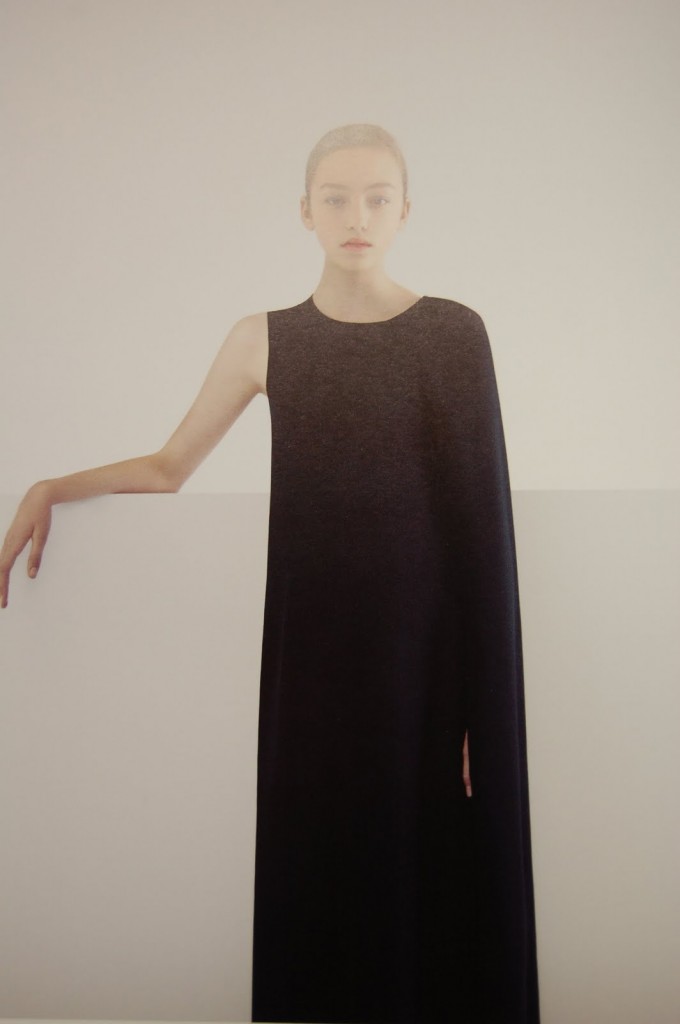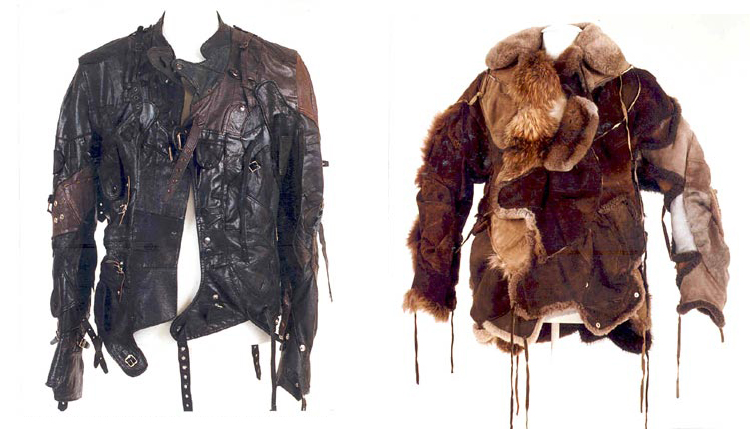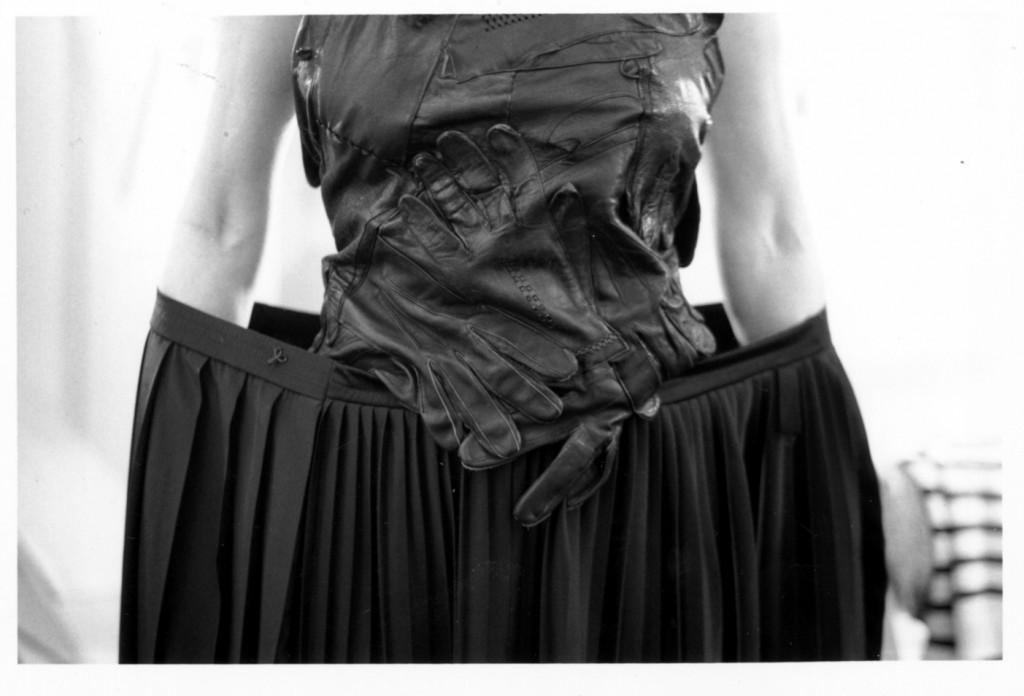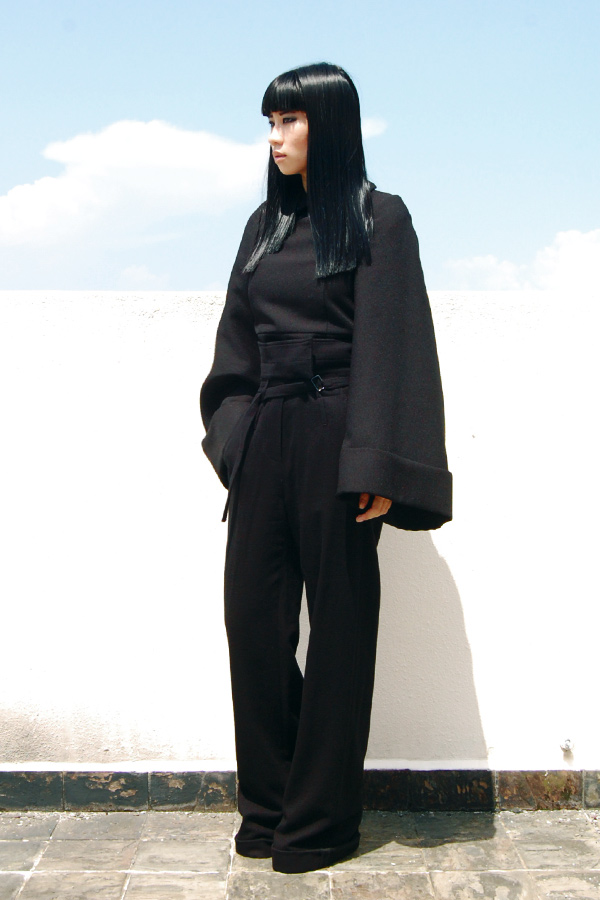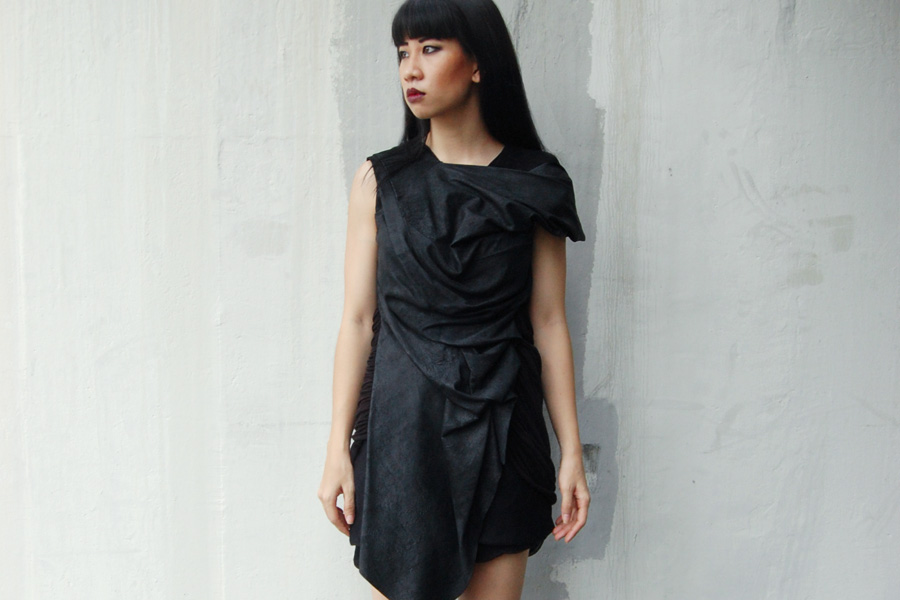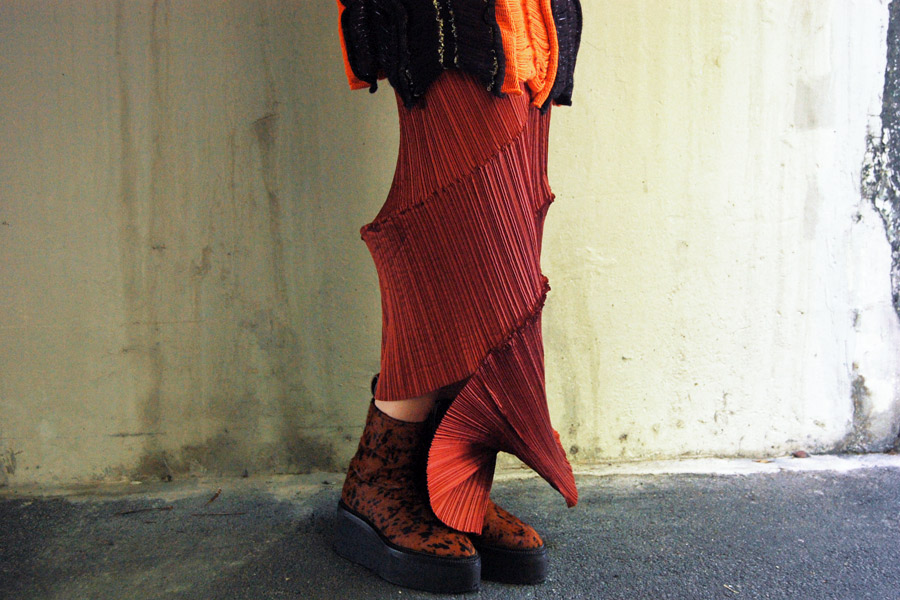In the past few years, there has been a surge of minimalist aesthetics amongst the fashion blogging community, which is probably no mere coincidence ever since Phoebe Philo took over the fashion industry by storm, followed by Raf Simons’s latest appointment to Dior that heralded a new Age for the decades-old atelier. It is also rather plausible that the global economic recession may have something to do with this burgeoning movement, considering that visible ostentatious display of wealth is of poor taste when many people are having a hard time putting food on their table. Following this growing trend, I have noticed that the word ‘minimalist’ has been slapped on every Tom, Dick and Nancy’s wardrobe, outfits, decors and their cats simply because they are white and sparse. While it is true that the idea of ‘less is more’, ie reductivism, is an element of Minimalism, it is not the sole definition of the aesthetics movement, especially in the realm of art and design.
So how does one actually define Minimalism? How can we label the term appropriately? In this essay I shall attempt to do just that. Bear in mind I am not an art major, but a reader and an observer, interpreting what art intellects have said in simpler terms.
Having read various explanations and definitions on the Interwebs, notably from MoMA, theartstory.org, and of course the ever not-so-reliable Wikipedia, I have summarised the main components of Minimalism to be as follows:
1. Impersonal Austerity
2. Anti-figurative forms
3. Democratic/Accessible
And with the help of this super thick gigantic book, I will explain these three components in greater detail, but hopefully with less verbose language.
Impersonal Austerity
Impersonal: featureless, anonymous
Austerity: extreme plainness and simplicity
In combining the two words together, what art scholars are trying to say is that Minimalism is the opposite of expressivism, hence the typical works are cold, and exudes little emotion. Older, expressive works tend to be crammed with metaphors, which early minimalist artists wanted to depart from. To them, their deal was that, ‘here is a cube.’ And that’s that. What they were more interested in was the shape and form and surface of the cube. The same thing can be applied to fashion. Minimalist designers concentrate on the specifics of form and fabric rather than the function of the garment as a body covering. They do this through processes such as rigorous reductivism and the utilsation of non-emotive design.
Rigorous Reductivism
I think most of us are familiar, or can at least deduce what the term means. Stripping the design object to its core would be the basic understanding of its meaning. However, it also refers to removing the appearance of composition, so even if the construction is incredibly complex, the final works look deceivingly simple, often utilising invisible closures. Take for example, the famous Balenciaga wedding dress. It can almost be considered a sculpture on its own, but it’s not held up by any corsetry nor does it follows the shape of the human body (a common theme in Minimalist works), The entire dress was moulded from the three seams connecting incredible lengths of silk gazar.

Wedding dress by Cristobal Balenciaga, 1967
Non-emotive Design
Non-emotive design elements are usually typified by geometric composition and/or the use of non-conventional materials.
Extreme simplicity often begins from simple lines and geometric shapes, and many early Minimalist works were plainly repetitions of shapes and the utilisation of lines and planes. Gareth Pugh pushed this idea further with his seminal works back in 2007, where the use of geometric repetition and linear shapes were prominent, and continued to be until very recently.
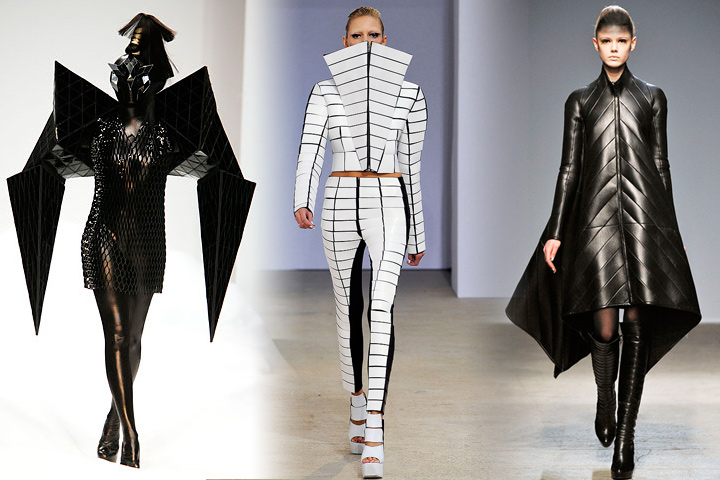
Gareth Pugh 2007, 2009, 2010
Early Minimalism rejects traditional craftsmanship in art objects, opting for sleek, industrial materials. Fashion’s equivalent would be the Japanese who often opt for unconventional fabrics not often found in ‘expensive’ clothing. There is Comme des Garcons whose boiled wool and polyester are some of the most common fabrics found in her collections, and I do believe that PVC has been sent down the runway more often than genuine leathers. But when it comes to textile technology, Issey Miyake led the way with his polyester Pleats Please and A-POC, both inventions he spearheaded to revolutionise how we view clothes, in that high-quality garments need not be made of expensive materials sewn by a hundred old ladies in an atelier. On the Parisian front, there was of course, the famous Paco Rabanne’s metal dress, Courreges‘s preference for vinyl, and Hussein Chalayan’s transformational table dress.

From left to right: Issey Miyake APOC; Issey Miyake Pleats; Paco Rabanne: Hussein Chalayan
Anti-figurative Forms
Figurative: derived from real object sources; representational of the human body or real-life objects
Related to the idea of form over function which was previously mentioned, the anti-figurative component of Minimalism also removes the idea of a ‘figure’ in terms of gender and human form from clothing. The book names the kimono as the perfect example of clothing that ‘eliminates gender distinction, and negate the sexuality frequently imbued in Western clothing’. Its emphasis on proportions and volume paints a picture of a genderless, ageless and weightless body. Issey Miyake once said, “I learned about space between the body and the fabric from the traditional kimono… not the style, but the space.”

Issey Miyake ‘Colombe’ Dress, 1991 – The same dress, unsnapped, hangs in the background
It was probably no coincidence that Japanese fashion pioneers were heavily reliant on the abstraction and rejection of the traditional female body so often glorified in mainstream Western, and some Oriental cultures. One of the most-lauded runway shows the fashion industry never ceases to refer back to is Comme des Garcons’s Spring/Summer 1997 show – ‘Body Meets Dress, Dress Meets Body.’ The initial reactions were unsurprisingly unpleasant and plenty of editors were getting all weirded out. To be fair it did look like Ms. Kawakubo had sent down Quasimodo lookalikes down the runway. As usual she was trying to challenge the traditional perceptions of beauty, but what was more important was that she re-adapted the female body as a gender-neutral costume. The lumps and bumps were not meant to constrict nor complement the female body, but instead created entirely new structures altogether.

Comme des Garcons S/S 1997
Democratic/Accessible
As I have mentioned earlier, Minimalist artists shun metaphors and traditional craftsmanship, which are often found in high brow art. The underlying key is that Minimalism is not about achieving flawlessness, but cultivating the relationship between the viewer and the object, like that approachable kid next door with a gap in his teeth and chicken pox scars as opposed to the beautiful work of God that is Benedict Cumberbatch who is forever unattainable.
The idea of of accessibility, or accessible clothing, has briefly surfaced in the previous points, such as using cheap materials to make creative, high-quality garments, and not having to conform to the idealized beauty standards to don genderless, weightless and ageless clothing.
However I believe that Deconstructionism brings the idea of democratic clothing even further, in that what you see, is what you truly see. It takes a complete garment and reduce it even further to its barest state; a snapshot in time portraying the process of its construction, stripping to their fundamental parts. Take is as the extreme form of reductivism, if you’d like. Margiela is often quoted as the pioneer of Deconstructionism, if not a Deconstruction specialist. His interest in the fundamentals of materials and processes of dress drove him to create garments that are diagrams of the construction stages. As someone who has a very shallow idea of a garment’s technical construction, being given a glimpse of its complexity allows me to have a greater appreciation of the process, sort of like how the audience always enjoy behind-the-scenes outtakes. One can only imagine the depth of the creativity and skills needed to create a particular process made tangible and frozen in time, in a way that looks like a proper, finished work. More of Margiela’s work here and here.

Additional material: A smart fellow pointed out in a conversation I had with him, that Deconstruction of a garment also de(forms) the body through the way they interact with each other, most visibly seen in Margiela’s flat garment series (bottom left). For example, a deconstructed garment may affect the way a body moves, or distort how the natural body looks, such as by misplaced sleeve joints or seams.
Three colored leather perfectos are cut into strips, bonded with lamb leather, and re-assembled together, clinging on their principal features: zips, yolks pads, belts, pockets entrances. The pants and the over-skirt are cut in nylon curtain fabric and fixed by black duck tape.
Time : 91 hours
One may ask how such an intricate jacket above is considered Minimalist. This is an example of reductivism at its extreme, the body is entirely stripped, leaving behind only parts that are essential to hold it together. The term Minimalism does not just apply to what’s on the surface, but its entirety in the design process has to be taken into account as well.
Like Ms. Kawakubo, Margiela’s works panders to impersonal aesthetics, in that the purpose or meaning of the design object is secondary to how it looks. Some of his works also relied heavily on repetitions and the use of non-conventional fabrics, such as the artisanal jackets which were made from recycled vintage gloves and belts. And needless to say Margiela has always been one of the few labels whose signifiers are exaggerated proportions.
Conclusion for Part One
So that was basically the formal definition of Minimalism. When I first read it, the impression I had of Minimalism was turned upside down. I’d like to stress at this point that clean works are not necessarily Minimalist, and Minimalist works can be intricate. What’s important is that it encourages us to re-consider the form and purpose of a design object, as well as usage of innovative materials.
But as we all know, art movements constantly go through changes and shifts over time. In the second segment, we will look into the evolution of Minimalism, especially in the 90s which has seemingly become the source of inspiration for plenty of style bloggers today, whether directly and indirectly. Thank you for reading and I hope the information presented has been of some use to you. If you have any further information to add on, please feel free to begin a discussion.



